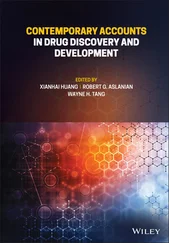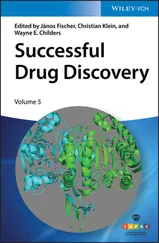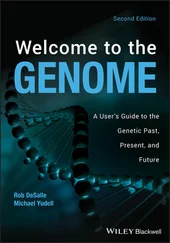Genome Editing in Drug Discovery
Здесь есть возможность читать онлайн «Genome Editing in Drug Discovery» — ознакомительный отрывок электронной книги совершенно бесплатно, а после прочтения отрывка купить полную версию. В некоторых случаях можно слушать аудио, скачать через торрент в формате fb2 и присутствует краткое содержание. Жанр: unrecognised, на английском языке. Описание произведения, (предисловие) а так же отзывы посетителей доступны на портале библиотеки ЛибКат.
- Название:Genome Editing in Drug Discovery
- Автор:
- Жанр:
- Год:неизвестен
- ISBN:нет данных
- Рейтинг книги:5 / 5. Голосов: 1
-
Избранное:Добавить в избранное
- Отзывы:
-
Ваша оценка:
- 100
- 1
- 2
- 3
- 4
- 5
Genome Editing in Drug Discovery: краткое содержание, описание и аннотация
Предлагаем к чтению аннотацию, описание, краткое содержание или предисловие (зависит от того, что написал сам автор книги «Genome Editing in Drug Discovery»). Если вы не нашли необходимую информацию о книге — напишите в комментариях, мы постараемся отыскать её.
A practical guide for researchers and professionals applying genome editing techniques to drug discovery Genome Editing in Drug Discovery,
Genome Editing in Drug Discovery
Genome Editing in Drug Discovery
Genome Editing in Drug Discovery — читать онлайн ознакомительный отрывок
Ниже представлен текст книги, разбитый по страницам. Система сохранения места последней прочитанной страницы, позволяет с удобством читать онлайн бесплатно книгу «Genome Editing in Drug Discovery», без необходимости каждый раз заново искать на чём Вы остановились. Поставьте закладку, и сможете в любой момент перейти на страницу, на которой закончили чтение.
Интервал:
Закладка:
Finally, a very relevant application of Recombineering is the generation of tagged genes libraries. Gene tagging can potentially overcome the use of high‐affinity antibodies to detect gene expression, but it is limited by the lack of faithful gene activity of tagged protein generated with the use of overexpressed cDNA vectors. BAC transgenes guarantee a quas‐physiological level of gene expression maintaining transgene regulatory element and promoters, although the tagged gene is not integrated in its endogenous locus but in a so‐called third allele. The generation of tagged BAC libraries at scale was greatly simplified by selecting recombineering events in liquid bacterial culture. The potential of this system is exemplified by the generation of genome‐wide BAC libraries for the analysis of protein localization in Daino Rerio and Caenorhabditis elegans (Sarov et al. 2006).
2.4 Metabolic Engineering
The highly diverse chemical structures of Natural Products isolated from microbes or derived semisynthetically from natural intermediates allowed the development of a broad range of different drug activities, including antibiotics and chemotherapeutics.
Genome sequencing data facilitated by the development of Next Generation sequencing platforms indicate that microbial genomes contain an untapped resource of biosynthetic gene cluster that can be exploited to generate novel functions.
Unfortunately, most of these gene clusters are not expressed under normal laboratory growth conditions even when it is possible to grow the natural host in lab environment. In addition, the size of the Biosynthetic gene clusters (reaching up to 200kb) renders the in vitro manipulation of this large clusters difficult (Smanski et al. 2016).
Recombineering or Recombineering‐derived strategies have therefore been an ideal method to characterize and to engineer long gene clusters. In fact, specific gene clusters can be inserted in an heterologous host to facilitate the genetic manipulation of the genes present in these clusters.
An alternative strategy would be the use of endogenous recombineering systems from different hosts to manipulate the particular genes present in the gene cluster (Yin et al. 2015).
Recombineering is rapidly becoming the method of choice to manipulate biosynthetic gene clusters but it is also increasingly used to evolve the bacterial genome as pioneered by the work of Church´s group. Hang HH, Isaacs FJ et al. in their landmark paper of 2019 described the use of recombineering to accelerate bacterial genome evolution by an automated multiplex recombineering strategy that they named MAGE (Wang et al. 2009). MAGE is using a pool of ssDNA oligonucleotide coupled with the expression of a ssDNA‐binding protein to install thousands of functionalized genome variants in E. coli genome. MAGE has been recently applied to lower Eukaryotes such as Saccharomyces cerevisiae (Si et al. 2017).
One of the problems associated with high‐throughput Recombineering is the need to select for the functional variant because there is usually no selective advantage for the recombined bacterial cell. To overcome this limitation, several strategies have been developed to combine the precision and efficiency of Recombineering with the strong selection pressure that occurs in bacteria after the generation of DSB caused by endonucleases like Cas9/CRISPR (Jiang et al. 2013; Jiang et al. 2015; Baker et al. 2016). Despite the large success of Recombineering applied to E. coli genetic engineering, the engineering of large biosynthetic pathways is still inefficient in endogenous hosts where a Recombineering system is not efficient or where Homologous Recombination is not efficient. Therefore, alternative strategies need to be developed to overcome this limitation. One possibility would be to exploit alternative pathways (Su et al. 2016) of DNA recombination/repair such as non‐homologous end joining (NHEJ) as previously done in mammalian cells (Maresca et al. 2013). A more promising approach relies on the recently described integration system by Transposon‐encoded CRISPR‐Cas (Klompe et al. 2019; Strecker et al. 2020). These strategies can facilitate genome engineering of bacteria and can possibly be implemented for the genetic manipulation of Eukaryotic genomes that are less prone to homologous recombination as described in the next section.
2.5 Genetic Engineering in Higher Eukaryotes
The genomes of Higher Eukaryotes and in particular mammalian genomes are quite resilient to genetic manipulation. It was only in the 1986 that the first gene targeting experiment to generate a functional Knock‐Out of the HPRT gene was published by scientists in Capecchi´s group (Thomas et al. 1986). The same targeting strategy was further optimized by Janish´s group leading to the establishment of a gene targeting pipeline in mESC where potentially any gene can be modified to generate genetically engineered mice models. Despite several attempts to further optimize the method to reduce homology arms length, it became evident that this gene targeting strategy in mESC requires long stretches of homology to the target sites to obtain an optimal efficiency of recombination. High frequency of recombined cells allows the isolation of engineered clones. An increase in the homology arm length by using targeting engineered BACs could further boost this efficiency (Yang and Seed 2003). One characteristic of this canonical gene targeting strategy is that most of the targeting events result in mono‐allelic insertion. Consequentially, additional gene targeting steps or animal breeding strategies are required to obtain bi‐allelic targeting. As discussed above, Recombineering has recently become the method of choice to generate the complex targeting cassettes with long homology arms needed for mammalian genome manipulation.
This classical gene targeting approach works relatively well in mESC and in DT40, a chicken bursal lymphoblast cell line (Buerstedde and Takeda 1991). It is still not clear to this day the reason why this approach is difficult to implement in other cell types. However, in 2002, David Russel lab showed that it is possible to use Adeno Associated Virus (AAV) to promote gene targeting in mammalian cell lines (Hirata et al. 2002). Despite the importance of this finding, this system is still laborious and pretty inefficient in inducing bi‐allelic gene targeting. A promising approach to introduce small indels/mutations by single‐stranded oligonucleotide in mammalian cells has been described by Kmiec´s lab using chimeric oligonucleotides, but it has not been extensively applied for the generation of cellular model due to its low efficiency and due to lack of reproducibility when targeting different loci (Cole‐Strauss et al. 1996).
Experiments from Jasin´s group clearly demonstrated that a targeted DSB induced by I‐SceI enzyme can overcome the anti‐recombinogenic feature of mammalian genome by promoting homologous recombination. This experiment was based on previous observations in budding yeast on mating‐type switching (Strathern et al. 1982) and on the model of recombination dependent on DSB generation (Szostak et al. 1983). There are two important findings as result of the work from Jasin´s group. The first one is that DSBs are preferentially repaired by NHEJ in mammalian cells and although it is difficult to evaluate the amount of perfect repair by precise NHEJ, imprecise NHEJ, using additional enzymes to process the broken ends of the DSBs, can result in template‐independent gene disruption. The second important finding is that DSBs can promote bi‐allelic DNA recombination if the break occurs in both alleles.
2.6 Targeted Endonucleases
The use of DSBs to promote homologous recombination in mammalian cells was limited by the lack of a modular site‐specific endonuclease technology that could be directed to any gene of interest. The solution to this problem came from the work of Chandrasegaran´s group where for the first time the engineering of Zinc Finger‐based endonucleases (ZFN) was described (Kim et al. 1996). This system combines the modular design of Zinc Finger Domain to the powerful nuclease activity of the restriction enzyme FokI that requires dimerization to induce DSBs. The requirement of an obligate dimerization of FokI for an efficient cleavage guarantees high specificity to the system. The Zinc Finger DNA‐binding domain was selected based on the previous work from the labs of Klug and Pabo directed to the discovery of ZF domain (Miller et al. 1985) and the understanding of its structure (Pavletich and Pabo 1991).
Читать дальшеИнтервал:
Закладка:
Похожие книги на «Genome Editing in Drug Discovery»
Представляем Вашему вниманию похожие книги на «Genome Editing in Drug Discovery» списком для выбора. Мы отобрали схожую по названию и смыслу литературу в надежде предоставить читателям больше вариантов отыскать новые, интересные, ещё непрочитанные произведения.
Обсуждение, отзывы о книге «Genome Editing in Drug Discovery» и просто собственные мнения читателей. Оставьте ваши комментарии, напишите, что Вы думаете о произведении, его смысле или главных героях. Укажите что конкретно понравилось, а что нет, и почему Вы так считаете.












